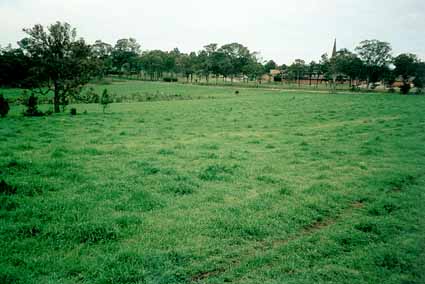This soil is described as a Kurosol. Kurosols are a podsolic soil which means they are duplex soils with a sandy bleached A2 horizon and an illuvial clay B horizon which is acid (an illuvial horizon has had colloids, soluble salts, and mineral particles leached down from an overlying horizon).
These soils are formed of sedimentary parent material which accounts for the poorly structured and hardsetting surface. Sandy soils like this, which are structureless (loose grains and not massive) tend to be freely draining and droughty. However they overlie clays and so often have a perched watertable.

Profile description
- 0cm: A horizon.Very dark grey-brown sandy clay loam. Slight amount of fine gravel. Trace of charcoal. Hard surface soil. Massive structure. Abundant plant roots. Earthworms found. Good drainage, the last three points are probably all due to the high organic matter content. Horizon probably brittle when dry. pH 6.2
- 26cm: A2 horizon.Greyish brown soil with the same texture as above. Fine gravel content changes from moderate to heavy. Massive stucture. Poor drainage because of the dense clay underneath. Some plant roots. pH 6.1
- 42cm: A2 (bleached) horizon.Light greyish brown sandy loam. Heavy content of fine gravel. Massive structure. Very poor drainage. Horizon prone to seasonal waterlogging. pH 6.3
- 50cm: B horizon.Light grey-brown and yellow brown light medium clay. Trace of fine gravel. Few plant roots. Very poor drainage. pH 4.7
- 79cm: C horizon.A grey, reddish brown and yellowish brown gritty medium clay. Lots of fine gravel. Massive structure. Very poor drainage. A few plant roots. The horizon contains very deeply weathered conglomerate. pH 4.2
Tocal newsletter
Want to find out about news, events, courses and publications?

